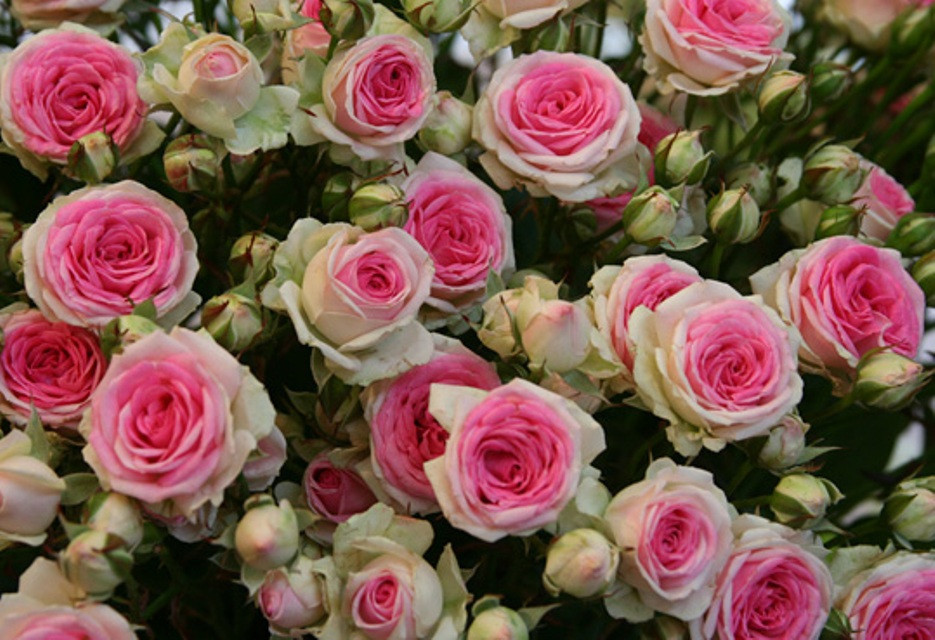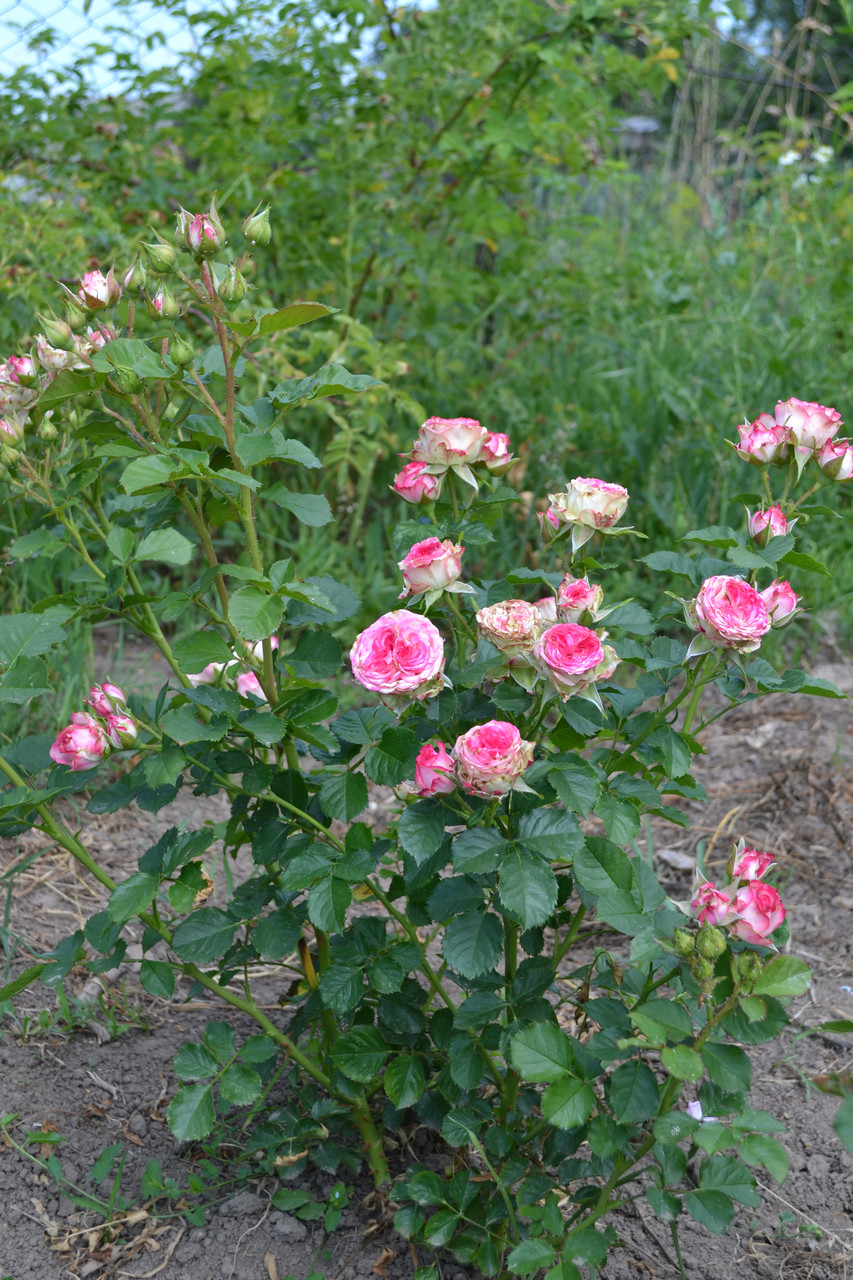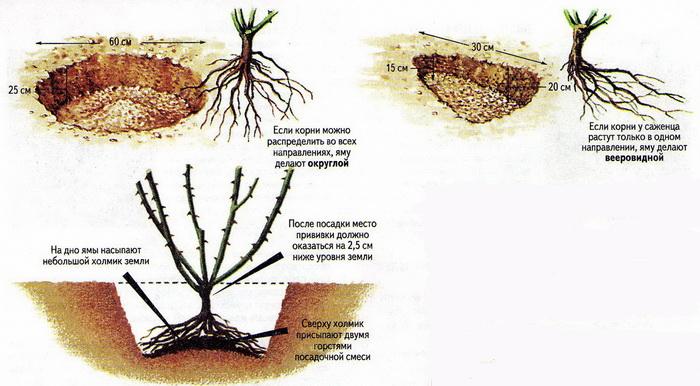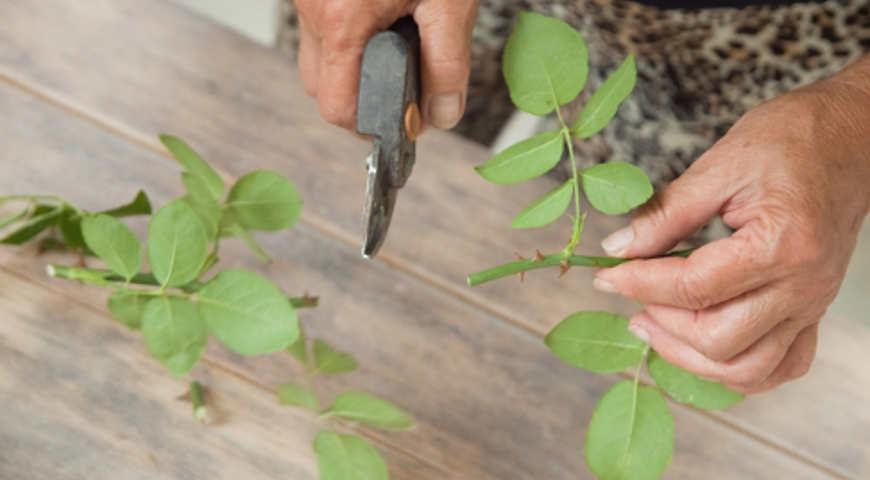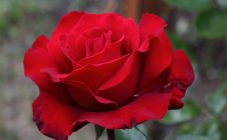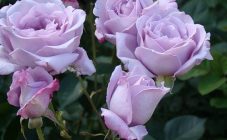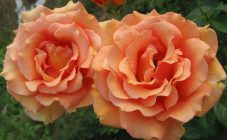Content:
Roses are favorite plants of the Rosaceae family by many flower growers. There are a huge number of varieties that differ in appearance and requirements for growing conditions.
general information
Mimi Eden (rose Mimi Eden) was first introduced to the public in France in 2001. It belongs to a large group of floribunda varieties bred at the beginning of the 20th century by crossing a tea rose with a polyanthus. Literal translation - "profusely flowering" - best describes this variety.
Variety characteristics
Botanical description of Mimi Eden rose:
- miniature bush, from 40 to 80 cm in height, up to 110 cm in width;
- few or no thorns;
- leaves are dark green, with a slight gloss;
- the roses are cupped, densely double: the inner petals are deep pink, the outer ones are almost white. Diameter - 3-4 cm. Collected in inflorescences of 5-10 pcs .;
- blooms continuously and profusely from mid-June to autumn frosts;
- The aroma is pleasant, with hints of hibiscus and red grapes.
The plant is characterized by winter hardiness and immunity to adverse weather conditions during the entire growing season. Flowers last about 20 days and are not afraid of rain. In direct sunlight, they quickly fade and lose their brightness.
Subject to agricultural technology, the rose does not get sick. If the plantings are thickened, black spot may appear.
Growing features
Rosa Mimi Eden prefers well-drained and moisture-absorbing soils. Acidity - from 5.6 to 7.3. It is placed in a place protected from cold winds and bright sun.
The landing is carried out as soon as the ground warms up. Instructions:
- the root system is pre-soaked in water for about 5 hours. The damaged and rotten fragments are removed;
- dig a planting hole: depth - 50 cm, width - slightly more than the volume of the roots;
- a drainage layer of sand and gravel must be laid on the bottom;
- the soil mixture is prepared from manure, sod land, sand and peat mixed in a ratio of 3: 2: 2: 1.
Plant care consists in:
- weeding;
- watering;
- dressing.
The earth is rarely moistened (once a week), but abundantly. About 8 liters of water are poured under one bush.
Complex mineral fertilizers are used for feeding. They are brought in at the beginning and middle of the season.
Roses are usually propagated by cuttings. The planting material is harvested as soon as the shoots become lignified. The cut is treated with a root formation stimulator, after which the cutting is moved to a nutrient substrate.
In winters with little snow, Mimi Eden's roses need shelter. They are covered with peat or wrapped in non-woven material. An air gap is left between the shoots to prevent rotting.
Sanitary pruning is carried out in the spring before bud break. No shaping is required because the plant naturally forms a beautiful and neat bush.
Advantages and disadvantages of the variety
Florists have noted many advantages of the Mimi Eden variety:
- unpretentiousness;
- disease resistance;
- long and abundant flowering;
- winter hardiness.
No significant deficiencies were identified.
Rose Mini Eden is suitable for beginners who are little familiar with the intricacies of caring for these plants. With their help, they decorate personal plots, arrange flower beds and lawns. Can be used as curbs.They look most effective in groups of 3-5 bushes.
